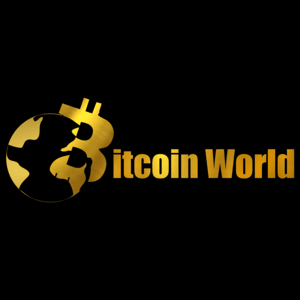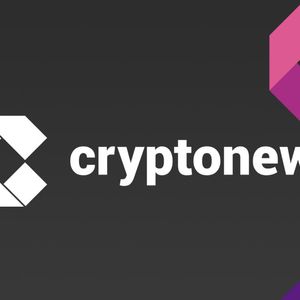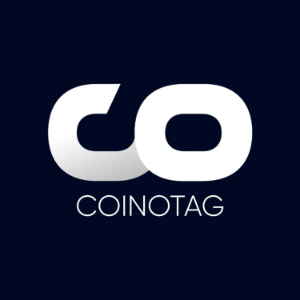Ethereum Foundation Grants: Massive $32.65M Fuels Ecosystem Growth in Q1 2025
6 min read
Big news from the world of blockchain development! The Ethereum Foundation (EF) has just announced a significant commitment to nurturing the network’s future, distributing over $32.6 million in Ethereum Foundation grants during the first quarter of 2025. This substantial funding injection highlights the Foundation’s ongoing dedication to fostering innovation, supporting public goods, and ensuring the decentralized growth of the Ethereum ecosystem. Understanding the Role of the Ethereum Foundation and Its Grants Before diving into the specifics of the Q1 2025 allocation, it’s helpful to understand what the Ethereum Foundation is and why these grants are so crucial. The EF is a non-profit organization dedicated to supporting Ethereum and related technologies. It doesn’t control Ethereum, nor is it a traditional company. Instead, it acts as a steward, providing resources and guidance to projects and initiatives that benefit the entire network and its community. One of the primary ways the EF fulfills this role is through its grants program. These aren’t investments in commercial ventures aiming for profit. Instead, they are targeted funding towards critical areas that might not otherwise receive sufficient support. Think of it as funding public goods for the digital age – infrastructure, research, security, and developer tools that everyone building on Ethereum relies upon. The goal of these blockchain grants is multifaceted: Foster Decentralization: By supporting multiple client teams and independent research groups, grants reduce reliance on single points of failure. Drive Innovation: Funding experimental research and cutting-edge development pushes the boundaries of what Ethereum can do. Enhance Security: Grants support vital security audits, formal verification efforts, and bug bounties. Improve Developer Experience: Funding tools, libraries, and documentation makes it easier for anyone to build on Ethereum. Support Core Infrastructure: Ensuring the underlying protocol remains robust, scalable, and efficient. Promote Education and Community: Supporting initiatives that help people learn about and contribute to Ethereum. Breaking Down the $32.65 Million Q1 2025 Ethereum Foundation Grants The official report from the Ethereum Foundation’s blog confirmed the distribution of $32.65 million in grants during the first three months of 2025. This figure represents a significant investment in the future health and capabilities of the network. While the precise breakdown of every single recipient and project is typically detailed in subsequent reports, the EF generally focuses its funding on several key strategic areas vital for the continued success and expansion of the Ethereum ecosystem . Based on historical funding patterns and the ongoing needs of the network, we can anticipate that this Q1 2025 allocation likely supported projects across categories such as: Funding Area Why It’s Important Core Protocol Development Supporting the teams building and maintaining the fundamental Ethereum software (client diversity, consensus upgrades). Essential for network stability and evolution. Layer 2 Scaling Solutions Funding research and implementation of technologies like rollups (Optimistic and ZK) to increase transaction throughput and reduce costs. Crucial for mass adoption. Security and Auditing Ensuring the safety of the protocol and smart contracts through rigorous audits, formal verification, and security tooling. Protects users and assets. Developer Experience & Tooling Building better development environments, testing frameworks, and libraries. Lowers the barrier to entry for developers building on Ethereum. Cutting-Edge Research Exploring future protocol improvements, cryptography (like Zero-Knowledge proofs), and decentralized governance models. Paving the way for future advancements. Community & Education Supporting conferences, educational resources, and initiatives that onboard new contributors and users to the ecosystem. Fosters a vibrant global community. This diverse allocation strategy ensures that funding addresses both immediate needs (like security and client stability) and long-term vision (like advanced scaling and research). It’s a holistic approach to Web3 funding that benefits everyone interacting with or building on Ethereum. How Does This Funding Impact Crypto Development? The impact of these grants extends far beyond just the recipient projects. By strategically deploying capital, the Ethereum Foundation directly influences the pace and direction of crypto development within its ecosystem. Here’s how: Accelerating Innovation: Grants allow researchers and developers to focus on foundational work without immediate commercial pressure. This leads to breakthroughs that might not otherwise occur. Strengthening Infrastructure: Funding core client teams and security audits makes the network more robust and trustworthy for everyone. Lowering Barriers to Entry: Improved developer tools and documentation, often funded by grants, make it easier for new talent to enter the space and contribute. Promoting Open Source: The vast majority of grant-funded work is open source, meaning the entire community benefits from the code and research produced. Building Public Goods: Many funded projects are non-profit or public goods that provide essential services or knowledge freely to the community. This model of funding is distinct from venture capital or corporate R&D. It prioritizes the health and decentralization of the public network, which is fundamental to Ethereum’s value proposition. The Ethereum Foundation grants act as a vital engine for progress, ensuring that the ecosystem continues to evolve and meet the challenges of a rapidly changing technological landscape. What Are Some Examples (General) of Projects Benefiting from Such Grants? While the specific Q1 2025 recipients will be detailed later, looking at past beneficiaries gives a clear picture of the types of projects supported. Examples often include: Teams developing alternative Ethereum clients (like Lighthouse, Teku, Nimbus, Besu) which are critical for client diversity and network resilience. Researchers working on complex topics like Danksharding, Proposer-Builder Separation (PBS), or advanced cryptography like ZK-SNARKs and STARKs. Teams building developer tools such as Hardhat, Foundry, or improving languages like Solidity and Vyper. Projects focused on security, such as formal verification tools or auditing public smart contracts. Initiatives providing educational resources, documentation, or running community events like hackathons. These examples underscore the foundational nature of the work supported by Ethereum Foundation grants . They are building blocks upon which countless decentralized applications (dApps) and services are eventually built. Are There Challenges in Grant Allocation? While the impact is overwhelmingly positive, managing a grants program of this size isn’t without its complexities. Challenges can include: Identifying the Most Impactful Projects: With a vast ecosystem, selecting where funding will have the greatest benefit requires deep understanding and foresight. Ensuring Accountability: Tracking progress and ensuring funded projects deliver on their goals is essential. Balancing Different Needs: Allocating funds across core development, research, tooling, and community requires careful consideration. Sustainability: While grants kickstart projects, ensuring their long-term viability after the grant period can be a challenge for some initiatives. The EF continually refines its processes to address these challenges, aiming for transparency and effectiveness in its grantmaking. Actionable Insights for the Community What does this mean for you, whether you’re a developer, user, or simply interested in Ethereum? Stay Informed: Follow the official Ethereum Foundation blog and social channels for detailed reports on grant recipients and project progress. Explore Funded Projects: Many grant recipients are working on open-source software or public resources. Explore these projects, use the tools, read the research, and contribute if you can. Consider Contributing: If you’re a developer or researcher, look into the types of projects the EF funds. There might be opportunities to contribute or even apply for future blockchain grants . Understand the Foundation’s Role: Recognize that the EF is a facilitator and supporter, not a central command. The decentralized nature of the ecosystem is its strength. Summary: A Strong Signal for the Ethereum Ecosystem The distribution of over $32.65 million in Ethereum Foundation grants in Q1 2025 is a powerful statement. It underscores the Foundation’s unwavering commitment to supporting the foundational layers and public goods of the Ethereum ecosystem . This substantial Web3 funding is not just a number; it represents vital resources directed towards the core development, security, scalability, and research that are essential for Ethereum’s long-term health and its ability to serve as a robust platform for global crypto development . These blockchain grants are critical investments that fuel innovation and strengthen the decentralized future we are all building together. To learn more about the latest Ethereum ecosystem trends and crypto development, explore our articles on key developments shaping Ethereum technology and blockchain advancements.

Source: Bitcoin World



